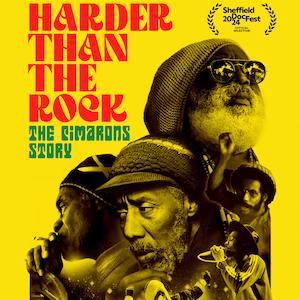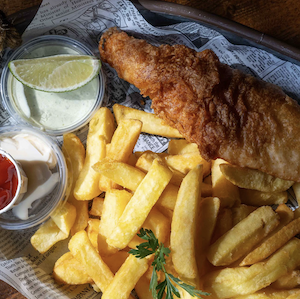Exposed; Film Noir
By Georgina Sussman
From the shadows of a dingy alley, the silhouette of a man steps forward, surrounded by a cloud of cigarette smoke and darkness, a frame that sets the mood for a classic Film Noir.
The 1940s and 50s black and white films were derived from detective novels and were inspired by German Expressionism. Film Noir reflected on human anxiety to captivate an audience focused on mystery, surrealism, and seduction. The films created a foundation for the film and cinema industry to expand into a combination of sophisticated horror, thriller, and drama. Film Noir translates to ‘black film’ which is portrayed through lighting, music, and camera angles.
In the majority of Film Noir films, the mood and music foreshadow the outcome of the movie, by being dark and melancholy. Using filming techniques such as altering the camera angles and creating smoky and bleary effects exposes the audience’s perception of the character and their stereotypes. Originally the films were shot in dreary greys, blacks, and whites, enhancing the stereotype of the characters and exposing the cynical side of both the character and the filmography.
Due to the latter of these movies having a complex narrative, the portrayal of characters had to be clear to be understood by the audience. The overexposure of stereotyping a character is prominent with four characters that form the structural arc of a traditional Film Noir.
The anti-hero is the male lead of Film Noir, often having a bad past, coming out a better man; he’s quick-witted and over-dramatic, and tends to narrate the film guiding the audience along with the film. The fears and anxieties in the film often stem from the anti-hero’s own issues, which at the time would have mirrored the public’s. Humphrey Bogart is a Film Noir favourite starring in many, most famously Philip Marlowe in The Big Sleep and Samuel Spade in the Maltese Falcon.
The next character that we see is the iconic femme-fatale, morally ambiguous, devious, and seductive, flirting with the anti-hero for personal gain. She also tends to be part of the villain’s plan, often backfiring; if she isn’t responsible for her own downfall she tends to be the reason for the anti-hero’s undoing. Joan Bennett’s portrayal of Kitty March in Scarlet Street is one of the most scheming femme fatale’s in Film Noir!
The femme-fatale often overshadows the girl next door; if there is one, she’s often who the anti-hero doesn’t notice but after a bad experience with the femme-fatale, he realises his love for her. In other Film Noir’s the girl next door can play the female lead, however, they often don’t play a role as large. Most notably, Cathy O’Donnell’s portrayal of Keechie in They Live by Night depicts this role perfectly.
The final character is the villain, they’re often dangerous and have hurt or killed many people in the film whilst having extensive plans to harm or murder the anti-hero. Orson Welles portrayal of Captain Hank Quinlan in a Touch of Evil is one of the most conniving, evil villains in Film Noir History.
Film Noir has been incorporated into modern films; as well as the films being popular, the directors were incredibly influential, too. Amazon Prime’s adaptation of F Scott Fitzgerald’s The Last Tycoon included a characterisation of the infamously perverted Fritz Lang who helped set the foundation for German Expressionism. The show exposes both his early genius and his perverseness.
The themes of Film Noir have carried on throughout films in modern society, having newer forms of this consisting of neo-noir, hyper-noir, and pulp-noir. A strong reason for Film Noir still being relevant today is because the themes of fate, morality, and self-destruction, subjects that are faced by every person at some point in their lives.
Top 10 Classic Film Noirs
Kiss Me Deadly 1955 Robert Aldrich
An anxiety-filled, murder mystery that fills every nerve ending with distrust and distaste for those you hold close, a perfect Film Noir.
Laura 1944 Otto Preminger
A Detective falls in love with the murder victim he’s investigating, crossing the lines of moral ambiguity whilst being filmed with noir techniques in an elegant manner.
Touch of Evil 1958 Orson Welles
The first shot is a close up of a ticking bomb, striking the audience with fear and anxiety, with one of the greatest villains in Film Noir history.
Scarlet Street 1945 Fritz Lang
An old cynical anti-hero, a scheming femme-fatale/villain duo and a morbid yet fulfilling ending to a dark plot.
The Maltese Falcon 1941 John Huston
A detective avenging his partners murder, whilst it turns into a search for the Maltese Falcon, a priceless artefact.
The Big Sleep 1946 Howard Hawks
One of the most complex plots in Film Noir History, with unexpected twists and turns at every corner, as well as starring the electric Humphrey Bogart and Lauren Bacall.
Gun Crazy 1950 Joseph H Lewis
A Tale of Bonnie and Clyde, before Bonnie and Clyde.
Gilda 1946 Charles Vidor
A scandal within a scandal, with a beautiful femme-fatale, a naïve anti-hero and an unassuming villain, Gilda is one of the tamer Film Noir’s on this list.
Sunset Boulevard 1950 Billy Wilder
An alternative version of traditional Film Noir, focusing on faded stardom as opposed to criminals, with desperate characters oozing drama, sunset boulevard defined Film Noir in everyday life.
Double Indemnity 1944 Billy Wilder
Cynical femme-fatale’s and anti-heroes, a devious plot to murder a husband, and an unsettling mood throughout the film.
Top 5 Neo-noir/ Modern Film Noir’s
Body Heat 1981 Lawrence Kasdan
A murderous femme-fatale and anti-hero partner together to kill her husband in a deadly affair resulting in a debacle of mistaken identity, replicating many classic Noir Films.
Pulp Fiction 1994 Quentin Tarantino
Filled with crime, imperfect anti-heroes and femme-fatales, violence and darkness, Pulp Fiction is a mixture of allure and madness expelled from Film Noir’s.
Collateral 2004 Michael Man
A contract killer and a taxi driver hostage make an unlikely pairing for a killing spree in Los Angeles.
Fargo 1996 Ethan Coen, Joel Coen
Although Fargo can be debated as to whether it is or is not Film Noir, I’d like to argue that with its strong plotline and anti-heroes and femme-fatales in a very dark world, Fargo involves crime, odd characters and plot twists for days, it falls under some form of Film Noir.
Nightcrawler 2014 Dan Gilroy
A film about crime, murder and journalism that capitalizes on thrills and dark comedy to create a gripping neo-noir.





